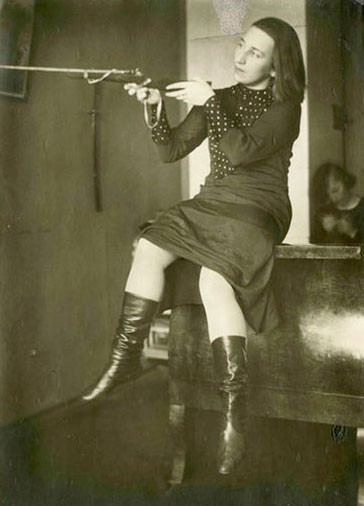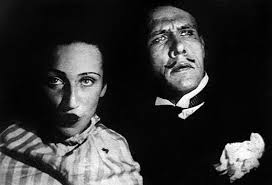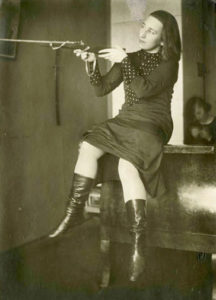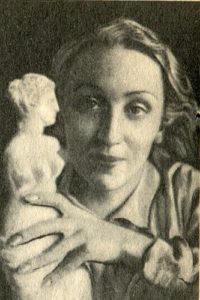
1902 - 1984
Alisa Iwanowna Poret

description
Alisa (Alisa-Ekaterina-Ada) Iwanowna Poret (Poret, Porret) was a Russian artist and graphic artist of Swedish-French origin, an outstanding master of book illustration. The student of Kuzma Petrov-Vodkin and Pavel Filonov became a prominent representative of the Russian avant-garde, and her apartment became a kind of literary and art salon, where one could not adhere to the style of socialist Realism that was official and obligatory for all creators of the country in the 1930s and subsequent years.
On behalf of P. Filonov, Alisa Poret created a large number of illustrations for the Karelian-Finnish epic “Kalevala” – this was a collective work of the group “Masters of Analytical Art”. In the future, the Museum of Karelia bought 50 drawings from the author (strip illustrations, original miniatures and endings to runes).
The artist was a close person and faithful creative partner for writer Daniil Kharms – they collaborated at the Children’s Department of the Leningrad State Publishing House and at the magazines “Hedgehog” and “Chizh”. Subsequently, A. Poret became the author of the appearance of Winnie the Pooh and his friends, drawing illustrations for the first edition in Russian – moving plush toys became our favourite cartoon characters. The artist created a series of famous kitties, present in different forms in every Soviet family.
In recent times, Alisa Poret, who had been repeatedly accused of formalism, was finally recognized as an outstanding artist, and not just an illustrator of children’s books (she designed books of Hoffmann, Zakhoder, Marshak, Mikhalkov, Bianki, etc.). Paintings and graphic works of the avant-garde artist are stored in leading museums in Russia; her works appear at the Sotheby’s auction.
Key ideas:
– Early works of Alisa Poret reflect her fascination with Primitive art; in the future, features of this style were constantly present in her work.
– The most significant in the work of A. I. Poret are her works, created under the guidance and influence of Pavel Filonov – that is the period from 1927 to 1936. “I received the highest education while working at Filonov’s workshop,” the artist wrote.
– When asked why she was so much attracted to illustrating books for children, the artist replied that she was cheerful and kind. These features, in addition to the obvious talent of the graphic artist, make her pictures lively and characteristic. At the same time, her illustrations are funny and sweet, but not “sugary”. Poret’s drawings became the prototypes of our favourite characters of the cartoon “Winnie the Pooh and all the rest.”
– According to the memoirs of contemporaries, Poret, who could draw incredibly precisely and fast and was a very hardworking person; she managed to read texts and immediately make sketches for them. Things, which she had just read, immediately turned into a painting and were one with it.
– In the postwar years, a new period of Poret’s work began. Continuing to work as an illustrator, she created portraits from photographs of Struve, Filonov, Kharms, painted “imaginary” characters, such as her favourite I.S. Bach, V. Khlebnikov, A. Einstein, P. Picasso (for the 90th anniversary of the famous Cubist). Many of her paintings contain techniques of different art movements, but nothing of analytical art is in them.
– In general, the legacy of Alise Poret attracts the viewer with its gushing life-affirming creativity, which includes the huge circle of outstanding contemporaries of the artist.
1902
1918
1920
1925
1926
1927
1928
1932
1940
1945
1969
1974
1980
1984
The birth of the artist
She studied at the preparatory class of the Art School-workshop

Entered the Petrograd Art and Industrial College

“Four at the table”

Joined the Circle of Artists society

She lost her husband

Started working at Detgiz

“Kalevala”

She survived the blockade with her new husband

Moved to Moscow

The Karelian Museum of Fine Arts bought 50 graphic works

Alisa Poret's first solo exhibition

Her personal exhibition was held in the Moscow branch of the Union of Artists

The death of the artist

Alisa Iwanowna Poret
On Artist
flow
Analytic realism
Neo-primitivism
friends
Tatyana Glebova
Pavel Yakovlevich Salzman
Peter Pavlovich Snopkov
artists
Kuzma Petrov-Vodkin
Pavel Filonov
Alexander Ivanovich Savinov
By Artist
flow
Neo-primitivism
friends
Tatyana Glebova
artists
Pavel Mikhailovich Kondratiev
Alexander Alexandrovich Osmerkin
Alexander Grigorievich Tyshler
